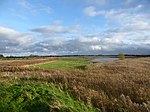Frank Montgomery School
1935 establishments in EnglandDefunct schools in KentEducational institutions disestablished in 2007Educational institutions established in 1935Schools in Canterbury ... and 1 more
Use British English from February 2023
The Frank Montgomery School was a mixed-gender secondary modern school in the village of Sturry near Canterbury in east Kent. It was founded in 1935 and closed in 2007, when the site and school roll was taken over by Spires Academy.
Excerpt from the Wikipedia article Frank Montgomery School (License: CC BY-SA 3.0, Authors).Frank Montgomery School
Bredlands Lane, Canterbury
Geographical coordinates (GPS) Address Nearby Places Show on map
Geographical coordinates (GPS)
| Latitude | Longitude |
|---|---|
| N 51.3116895 ° | E 1.1483165 ° |
Address
Spires Academy
Bredlands Lane 1
CT2 0HD Canterbury
England, United Kingdom
Open on Google Maps







